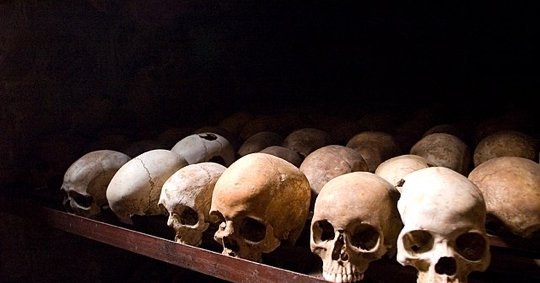Rwanda was colonized by the Germans and then the Belgians. At the end of the 19th century, Europeans divided the people of the “land of a thousand hills” into three new ethnic categories: Tutsi, Hutu and Twa. The general academic consensus is that this division is faulty and a sheer European invention. Europe’s pseudo-scientific racial theories exemplified these divisions after the League of Nations offered Belgium in 1916 as a “Trust Territory”. Belgium continued the German legacy of maintaining these pseudo divisions in its new colony as a systematic effort to sow racial division which in fact was actually based on pre-colonial socio-economic status.
Within the above mentioned colonial division of people, the minority Tutsi population was given preferential treatment by the colonial powers over the other groups. However, in 1962, Belgium granted Rwanda independence which followed with elections that gave the majority Hutu power in the newly independent country. Successive unrest and a coup-d’état culminated in a civil war between 1990 and 1994 after exiled Tutsi from the Rwandan Patriotic Front (RPF), including current President Paul Kagame, invaded Rwanda from neighboring Uganda, allegedly arguing that the then Rwandan government was authoritarian and corrupt, and the system was unstable. The group claimed to act on behalf of all exiled Tutsi. A civil war ensued. More unrest in neighboring Burundi exacerbated the situation, with all these events culminating with what we know today as the Rwandan Genocide. The start of the Genocide is April 6, 1994, and it began when a plane carrying the Presidents of Rwanda and Burundi, both Hutu, was shot down and crashed, killing both leaders. The Genocide ended after Kagame’s forces entered Kigali, the capital, on July 4, 1994 and managed to establish control over the rest of the country in subsequent days.
It is alleged that the United States, the United Kingdom and France knew of the mass killings yet chose not to interfere to put an end to it. In a televised speech on April 6, 2024, President Emmanuel Macron spoke of the horrors of the Rwandan Genocide, mentioning that France could have done more to prevent the atrocities yet fell short to explicitly claim complicity after certain investigations and studies showed that it allegedly sought to support the Hutu leadership.
Nevertheless, it is naïve to think that France’s new position on the Rwandan Genocide comes from sheer goodwill and humility. French influence in Francophone Africa is waning, therefore it needs every ally it can get on the continent. It seeks good relations with Rwanda for the advancement of its interests. Though it surely is not the first time a state uses identity, affinities and historical events as a means to influence current relations.
That being said, Europeans invaded and colonized this land, created pseudo-ethnic divisions amongst the people, arguably refused to intervene to stop the killings and today allegedly use their remorse over painful and dark events to increase their influence in the region.
As Europeans, we have collective responsibility to ensure that Rwanda becomes a heaven on earth. We owe it to the memory of all those who died for our - European - sins. Rwanda deserves better.


Follow the comments: |
|
